From Bare To Bountiful
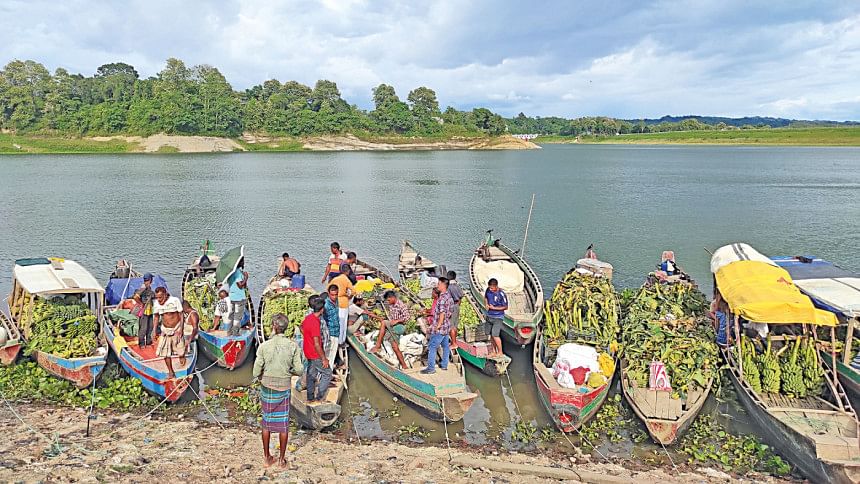
"You are being transferred to the Chittagong Hill Tracts."
This was a popular dialogue in the climactic scene of Bengali movies in the 1990s, when the hilly regions were looked upon as the backwoods of the nation, a place where government employees would be posted as a punitive measure.
However, the 'backwards' CHT of the past now stands as a beacon of massive economic, educational, and social progress. Once, thousands of acres were uncultivated in the CHT. Now, the areas are full of various crops and fruits.
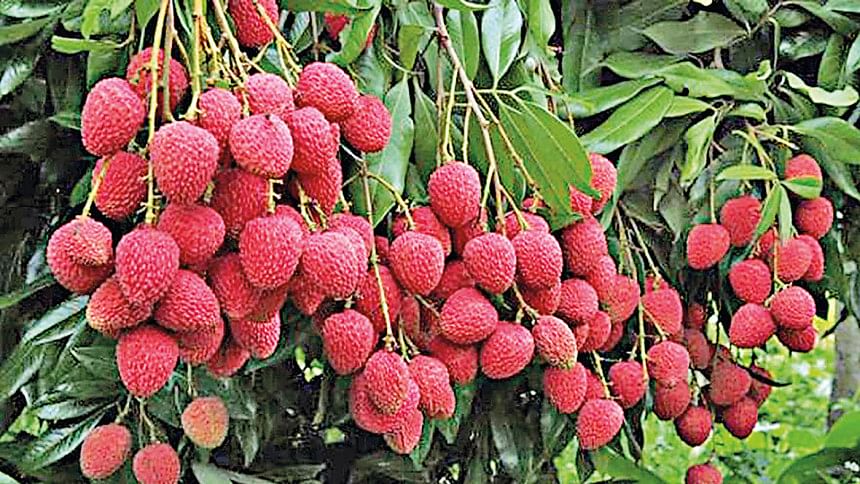
A few hundred years ago, rice, tea, and oilseeds were cultivated in the plains between the valleys of the CHT, earning it the acclaim of being known as Karpas Mahal (land of cotton) during the Mughal Empire.
But as times changed, so did the mode of cultivation. Jhum cultivation, also known as slash and burn agriculture, was the dominant force in the region in the past. While it remains a tradition, it is no longer the way of life.
Now, the region is filled with all kinds of crops throughout the year as the community cultivates cashew nuts, coffee, pineapples, mangoes, jackfruits, bananas, oranges, guavas, dragon fruits, strawberries, lemons, papayas, custard-apples, wood apples, ginger, and turmeric.
Vegetables are also produced, with most being organic as they hardly apply fertilisers since the soil is fertile and naturally yields abundantly. At present, orchards upon orchards of fruit are being cultivated in the hills.
The three hilly districts -- Rangamati, Khagrachhari, and Bandarban -- now produce about 20 percent of the total fruit in Bangladesh, according to officials of the Department of Agricultural Extension (DAE). This is a result of modern farming methods.
Once a rare sight in the CHT, power tillers, pumps, and tractors combined with modern irrigation systems and the use of improved seed varieties have replaced the traditional farming system.
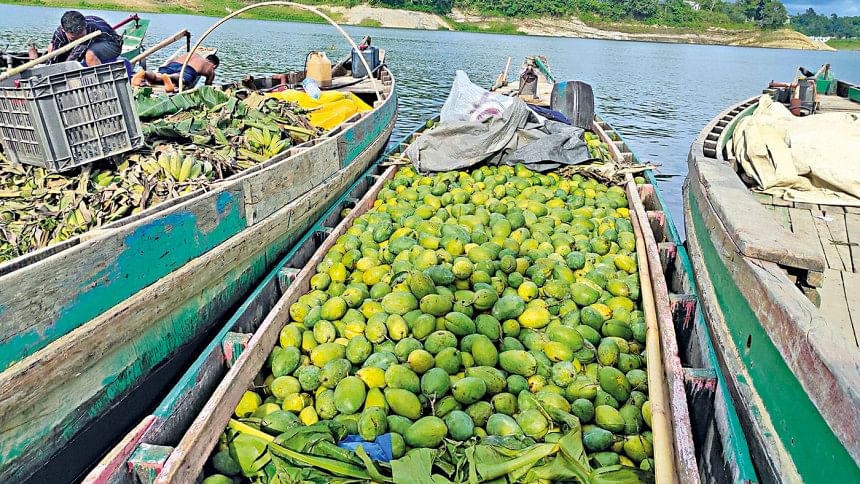
Mohammed Basirul Alam, acting deputy director of the DAE of Khagrachhari, said there are around 3,500 people in the district who cultivate mangoes on around 4,150 hectares.
According to DAE estimates, Khagrachhari will produce around 49,000 tonnes of mangoes this year. Alam believes mangoes worth around Tk 200 crore are grown in the district annually.
Md Altaf Hossain, chief scientific officer of the Hill Agriculture Research Station under the Bangladesh Agriculture Research Station in Khagrachhari, said fruit production increased substantially in the three hill districts in the past 15 years on the back of the improvement in the communication systems and growing entrepreneurial mindset.
He is also the project director of the "Cashew nut and coffee research project".
Once, mangoes would be brought to the CHT from Rajshahi, but according to Hossain, the three districts now meet over 20 percent of the country's demand for the delicious fruit.

Although it would be impossible to pinpoint the moment that things began to shift, the introduction of mobile networks to the region in 2008 undoubtedly shaped its economic destiny. Numerous infrastructure development projects since 2009, including the widening of roads and bridges boosted connectivity in the remote areas of the CHT. That played a major role, as did the connection to the national electricity grid.
Such bold initiatives brought a change in the mindset of the educated young generation, who began investing and profiting. Seeing that success, the next generation was encouraged to invest in agriculture.
Take the example of Debashish Chakma, who lives in Shantipur village in the Panchari upazila of Khagrachhari. After completing his master's from the department of anthropology at the Chittagong University, he worked in various organisations for about 10 years.
After saving up, he started gardening fruits like mangoes, mandarin oranges, and guavas over 15 acres of his family land in 2012.
Chakma, president of the Panchari Fruits Garden Owners Association, said once he started turning a profit from the garden, he quit his job and became a full-time agribusiness entrepreneur.
He earns around Tk 25 lakh per year and at least 10 people work year-round in his garden. He said there are more than 1,000 higher-educated agribusiness entrepreneurs in the district who were contributing to the economy and creating jobs.
"I believe these entrepreneurs will change the economy of the CHT as their capital is growing. This will help establish an agro-processing industry."
Chakma also said the introduction of modern technologies has made farming commercially viable for entrepreneurs. Even highly educated individuals have put their talents to the business.

Prue Nue Mong, who completed LLB under the National University, opted not to practise law but rather become an agro-entrepreneur. He developed an interest in agriculture in his childhood as agriculture was his family's main source of income.
However, he said his family would not use technology or modern cultivation methods. "I think the agriculture sector in the hilly areas has bright prospects, and this can change the livelihood of the people."
He also said investing in agriculture provides a quick return on investment.
Mong invested a nominal amount and gradually established a fruit garden over an area of 280 decimals in Kuhalong Headman Para in Kuhalong union of Bandarban sadar upazila.
He added that a decade ago he used to cultivate mandarin oranges, guavas and dragon fruits before successfully developing the garden. "I have earned at least Tk 8 lakh annually for the past six years."

 For all latest news, follow The Daily Star's Google News channel.
For all latest news, follow The Daily Star's Google News channel. 


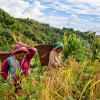


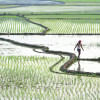


Comments